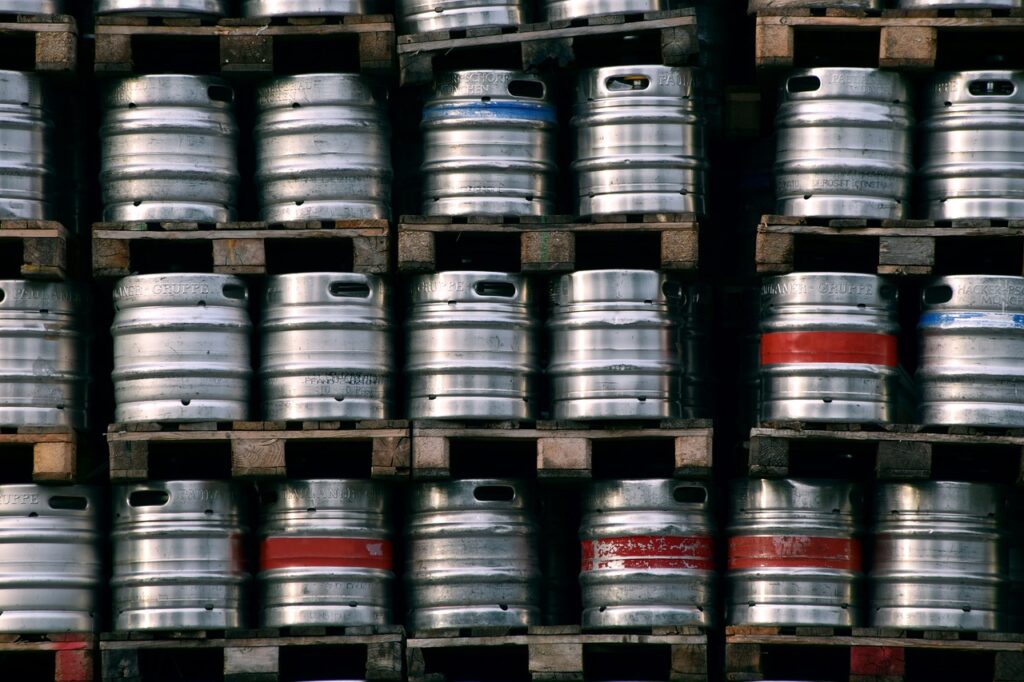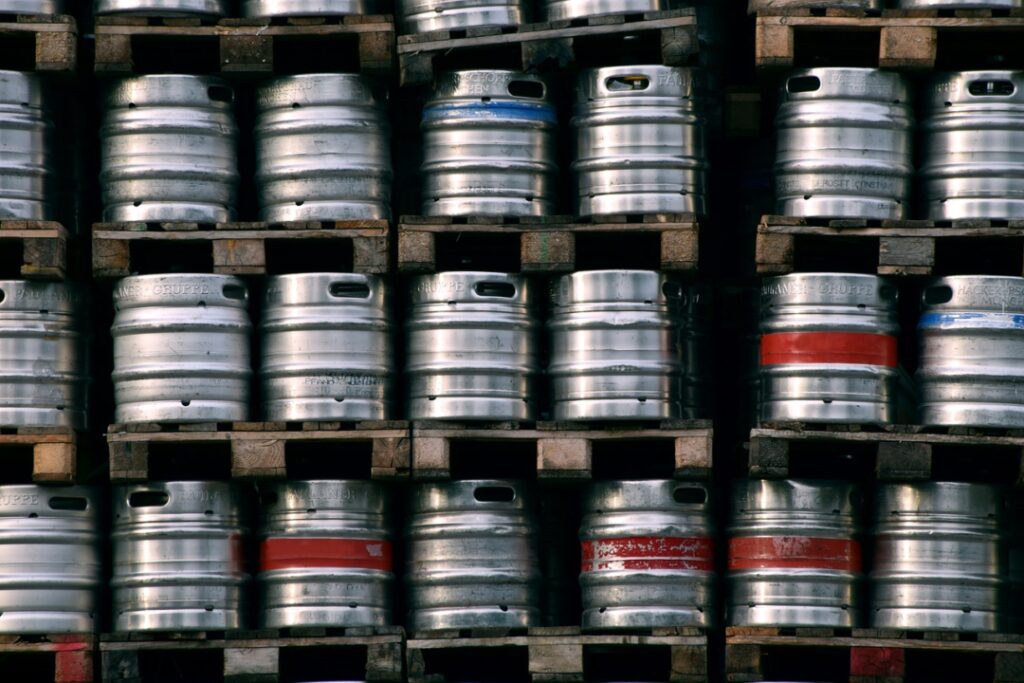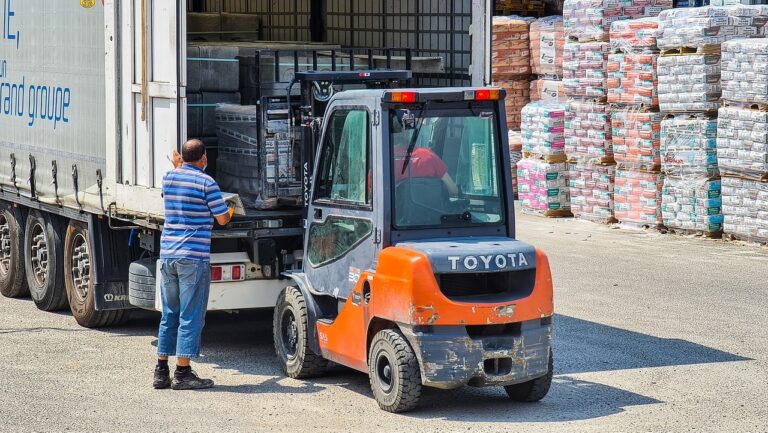Introduction:
Keg management is a crucial process in a brewery’s operations. Kegs offer a cost-effective and sustainable way to package and distribute beer from the brewery to the local pubs – on time in full and fresh!
According to SIBA, pubs account for roughly 50% of all beer sold in the UK. Following the pandemic, beer production volumes recovered quickly, with on-trade beer sales via pubs and restaurants increasing by 41% in 2022 (SIBA report, 2023).
Efficient keg management is vital to navigating the myriad of beer distribution challenges such as shrinkages, ullages, and quality issues. This blog post will discuss the main challenges in keg management and share a viable technology fix to resolve keg traceability issues.
Kegs – A Circularity Booster!
A keg is usually a stainless steel barrel used to store and transport large quantities of beer in a closed-loop supply chain, e.g. brewer to wholesaler or pubs and back.

“Steel kegs are truly one of the best examples of reusability and circularity, with decades of reuse potential”
— Kyle Tanger, Sustainability Leader, Deloitte Consulting
A steel keg comes in various sizes but the common ones are 50 L, 40 L (Firkins), and 20 L (Pins). The latter two are the popular options amongst the growing craft brewers in the UK.
Keg is an excellent example of returnable transport packaging (RTP) and a sustainable alternative to single-use plastic kegs, cans, and bottles.
How Many Kegs Should a Brewery Have?
Well, the optimal number depends upon multiple factors such as demand, production capacity, and transportation distances.
Kegs and related brewery packaging account for 20% of the brewery’s operational cost (Martin et al., 2022). Therefore, getting the number of keg inventories right is crucial for small and independent brewers who form a majority of the over 3000 breweries in the UK.
Considering local pubs within a 40 miles distance of a brewery, research indicates an average keg turnaround rate of 5.5 per year. This works out to around 66 days for one rotation cycle from brewery to pubs or restaurants and back.
Based on their existing beer sales in keg units and keg inventory pool size, Brewers can accordingly assess if their turn rates are in line with the industry average. This metric can also help a brewery tap into additional cost savings by identifying inefficiencies that affect the availability, velocity, and capacity of kegs.
What are the Challenges in Keg Management?
Managing Keg Inventory
The lack of a reliable asset (kegs) register and poor visibility of keg distribution is a big challenge for many breweries.
The brewing schedule is often driven by the visibility of keg inventory, and brewers need an accurate and current count of kegs to manage the supply-demand balance effectively.
90% of independent breweries in the UK own and manage their kegs inventory pool for better operational control (SIBA report, 2023).
A standard 50 L size keg costs about £ 150 and if the brewery on average owns 500 kegs in inventory then it’s a valuable £ 75,000 capital locked in kegs assets, including empties!
Managing keg inventory records in many breweries is still a rudimentary procedure of manual counts. The laborious process is not only error-prone but also a big source of frustration for operations, wasting costly labour hours in repetitive and administrative tasks.
Without credible information on the keg inventory, breweries cannot make informed decisions on production schedules. They stand exposed to risks of longer lead times, excess safety stocks, working capital squeeze, and missed business opportunities.
Theft and Losses
An empty keg is a reusable asset on the balance sheet and it must return to the brewery quickly for a refill. However, empties tend to somehow grow wings and fly off the radar!!
Research suggests that 10% of keg inventory never returns back to the brewery in the UK. Missing kegs is a real concern for independent breweries as costly replacements put severe pressure on their cash flow, especially when the business is trying to resurrect from the pandemic and cost of living crisis.
Many brewery operations continue to practice manual counts and navigate the conundrum of a keg deposit system. The deposit system offers little motivation or urgency for the downstream wholesalers, retailers, and pubs to return the empty kegs. It’s simply a poor band-aid fix to a serious issue of shrinkage.
Keg traceability and reliable location data are still a piped dream for many breweries. Lack of system interoperability and costly IT infrastructure are barriers to getting end-to-end keg traceability in the beer supply chain.
Quality and Maintenance
Freshness and fullness of beer in kegs are two of the quality struggles faced by breweries.
Breweries diligently keep a record of the fill cycle, packaging, and best-before information for compliance with excise duty regulations. However, once the kegs leave the brewery, it is difficult to monitor the quality and quantity of beer transported to downstream customers – distributors, and pubs.
Breweries have no real information on factors such as temperature, pressure storage, and draftline conditions that can impact the keg yield. According to one study, there is a 23% loss per keg owing to waste, spillages, and unreported sales. Thus, when distributors or pubs raise quality and ullage complaints then there is little substantial data for the brewery to contest the replacement demand.
A keg is expected to last 20 to 30 years but research suggests that in practice the lifetime of the steel keg has shrunk down to about 80 reuses. This is mostly due to the rough handling and bumpy journey of kegs from the brewery to local pubs and back.
The lack of visibility into the current condition of the kegs is a big barrier to the timely maintenance of kegs and replacement decisions.
How to Fix the Traceability Issues?
Investing in a keg tracking system? Indeed, but money in the bank is also precious!
Conventional keg tracking technologies like barcodes and RFID offer cheaper tag options but require a large initial investment in scanners and IT infrastructure. While scanning and tracking kegs within a brewery facility may work well, all traceability is lost when the keg leaves the premises. The tags are frequently damaged as a result of the wear and tear from rough shipments and rigorous keg cleaning methods.
What is the Alternative?
There are industrial-grade devices/tags/trackers now available in the market that can retrofit new and existing keg inventories.
- Simply rivet and install these devices with minimal interruption to operational keg handling and distribution processes.
- Good value for money, the device can cost as low as a tenth of the asset value and keep track of the keg location and condition through several reuse cycles.
- Begin keg tracking on energy-efficient and low-cost subscriptions without the need for costly IT infrastructure.
- Asset (keg) trackers can deliver vital location and condition data to any keg tracking software, enabling actionable information to monitor keg yield regardless of the location (brewery, distributor, or local pubs).
If you are experiencing keg traceability challenges, please contact me on Linkedin, and will be glad to discuss your specific needs.
Closing Thoughts
Efficient management of kegs can provide a competitive advantage for a brewery. It enables the safe storage and timely distribution of fresh beer whilst ensuring financial discipline in the brewery operations. It is all the more important for an independent brewery, which runs with limited production capacity and labour resources. Finally, breweries should leverage viable technology alternatives to fix keg traceability challenges and optimize the cost of operations.






1 thought on “Keg Management: Navigating Hurdles to Deliver Fresh Beer”
Pingback: Selecting Returnable Transport Packaging : Things to Know
Comments are closed.